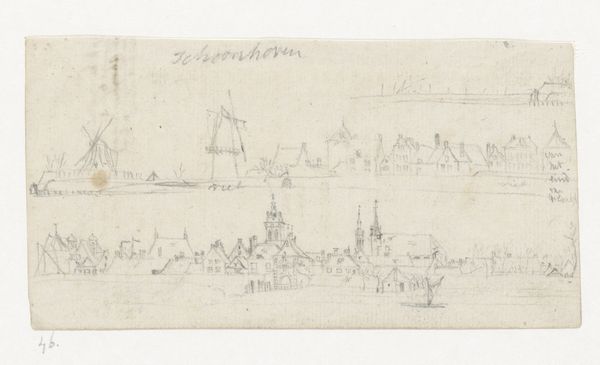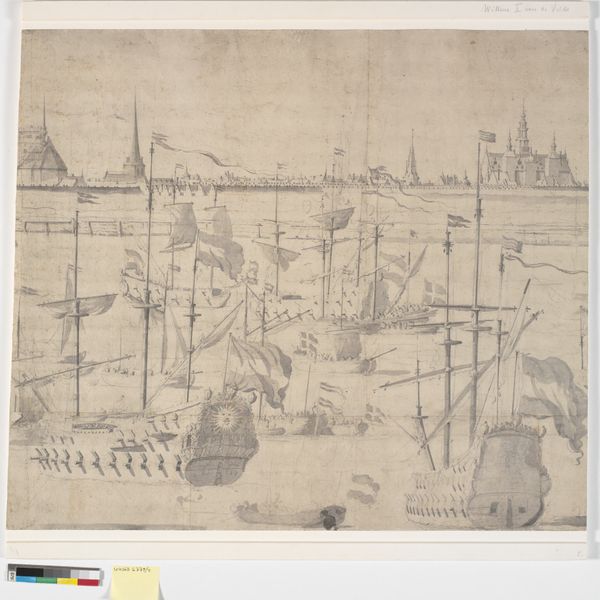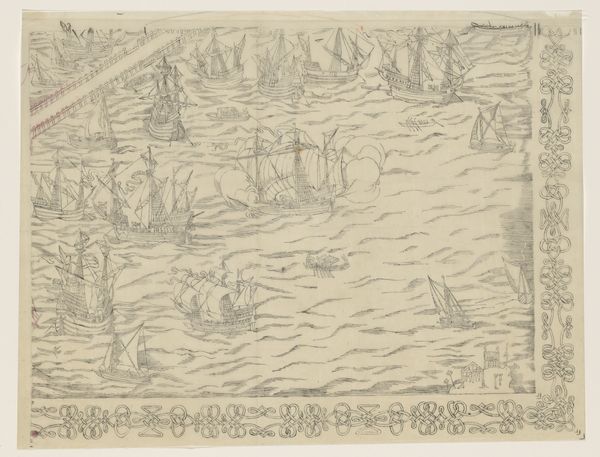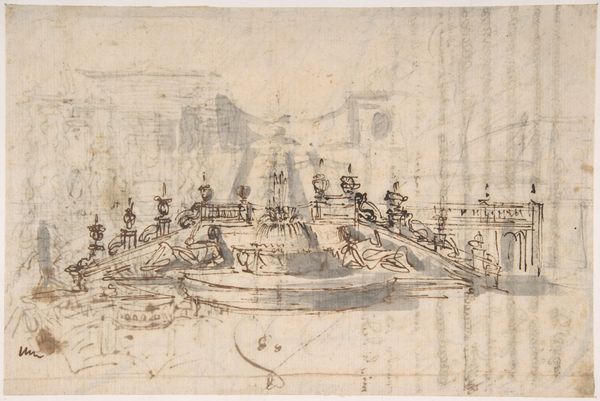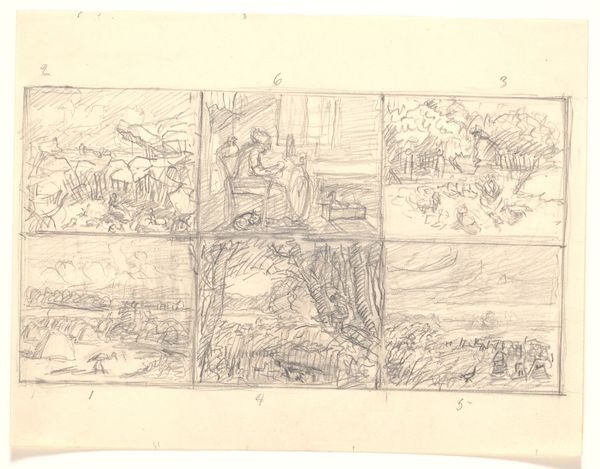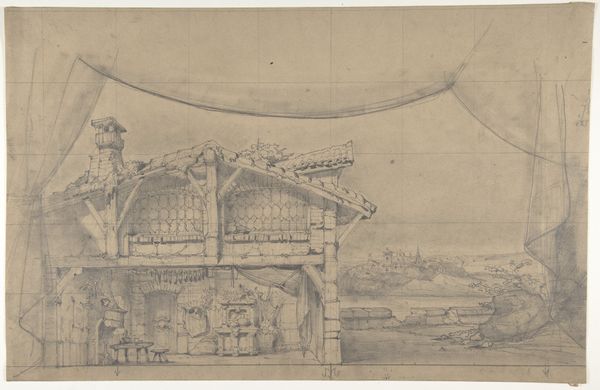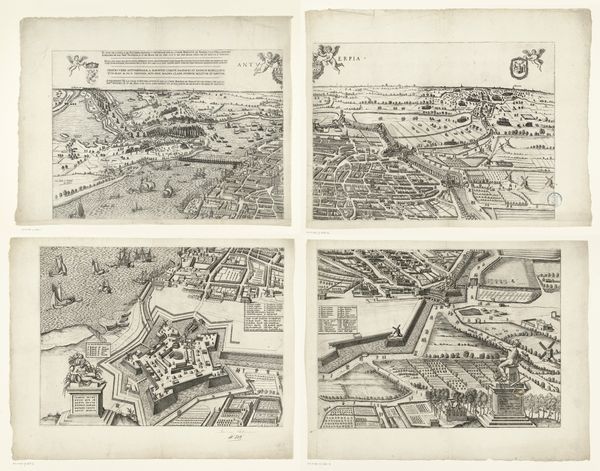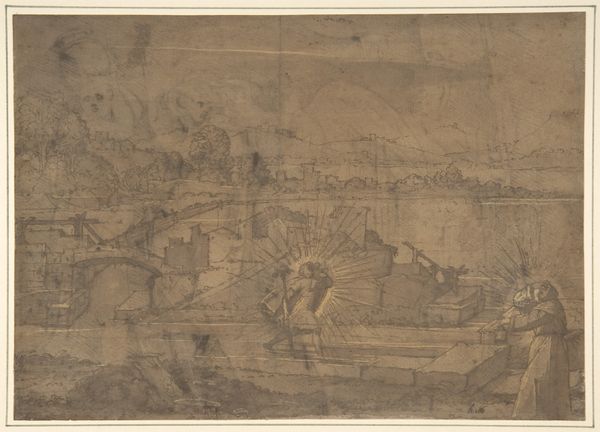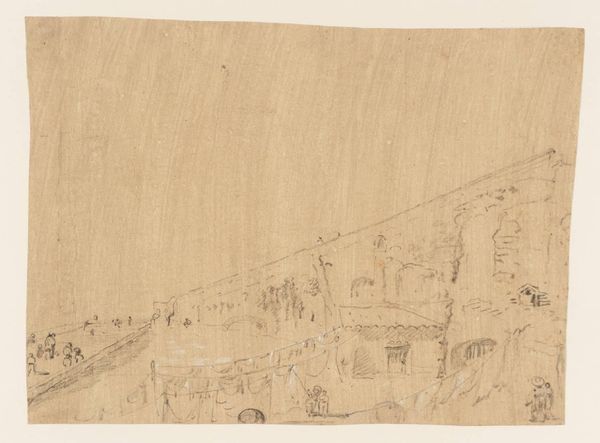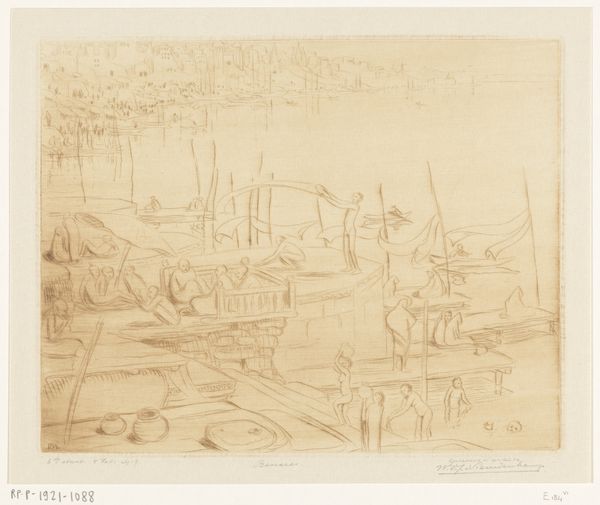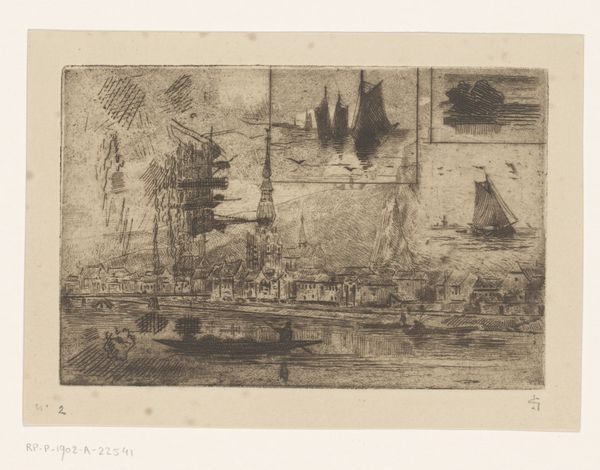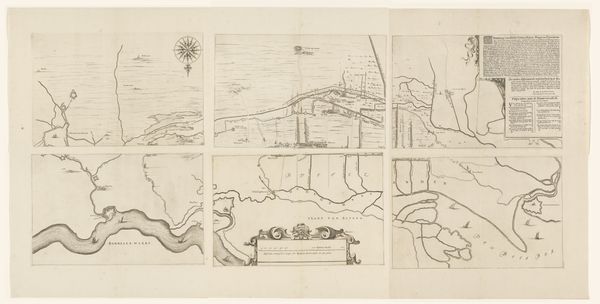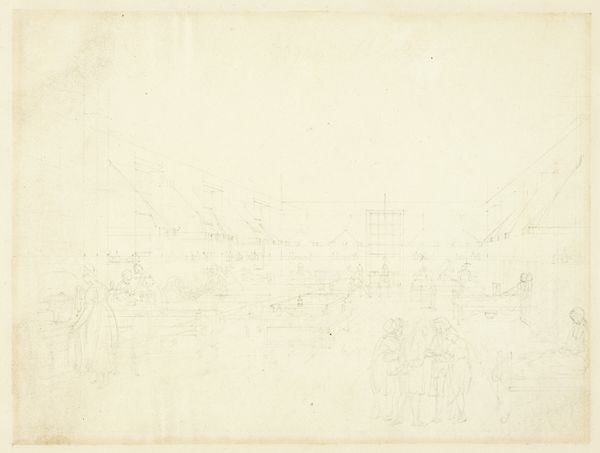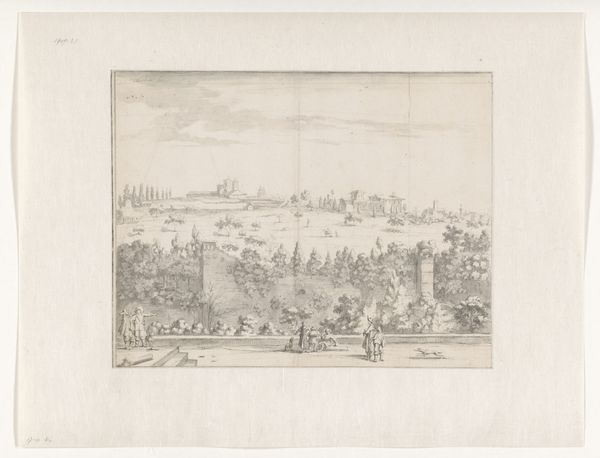
drawing
#
drawing
#
baroque
#
pen sketch
#
landscape
Dimensions: 537 mm (height) x 2080 mm (width) (monteringsmaal)
Curator: Here we have "The Dutch Fleet at Copenhagen Roads, 1658" by Willem van de Velde the Elder. Editor: Immediately, it's this whisper of a moment caught in pen strokes – a fragile net of lines holding all these hulking ships. Curator: Precisely. The fragility speaks to the medium: it's a drawing, a pen sketch, not the imposing oil paintings one might expect for such a martial subject. Think of the material reality: pen, ink, paper – readily available, easily transportable. Was this sketched from life, perhaps even onboard a vessel? Editor: It makes you think of war reportage, right? Except instead of gritty photography, we have these elegant renderings, this ballet of sails. Curator: Well, consider van de Velde's role. He was, in essence, a war artist. He and his son were present at many naval engagements, documenting them for the Dutch fleet. So yes, a war correspondent but one working within the established patronage systems of the era. This drawing functions, perhaps, as both documentation and propaganda. It puts Dutch naval power on full display. Editor: It's also fascinating that this bustling harbor, all these ships, could all be about materials too – each rope, sail, and timber a testament to labor, to colonial resource extraction. Curator: Precisely! Each ship represents a whole network of production and consumption – think about the wood imported from the Baltic region, the canvas woven in workshops, the rope made by skilled laborers. Editor: There's a funny sadness to it, though. The ghost of industry haunting this scene of apparent triumph. Like, did everyone involved in constructing these war machines pause to think what it all really meant? Probably not. Curator: I find it compelling that an ostensibly documentary image invites that kind of philosophical introspection. It brings up all the questions and tensions of the 17th century, about power, trade, and who benefited from it. Editor: In the end, the work seems less a depiction of power and more a poignant meditation on our relentless need to reshape the world around us. Curator: And the paper it's on is surprisingly thin, like vellum. These are precious but also disposable materials. Editor: Ephemeral beauty, yes. A record etched on something so easy to ruin. Just like life!
Comments
No comments
Be the first to comment and join the conversation on the ultimate creative platform.
